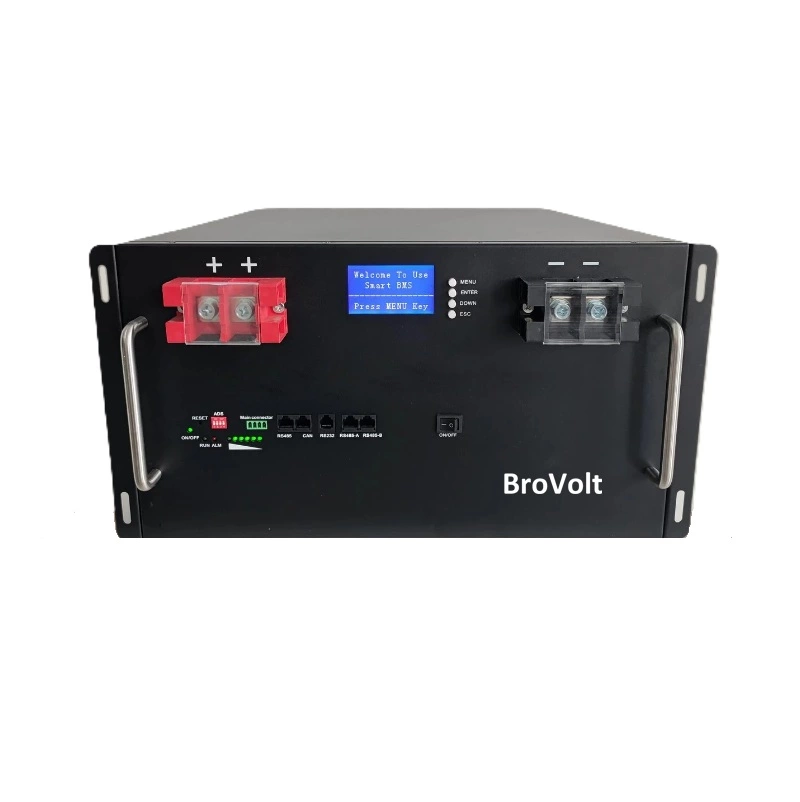In many regions of Africa or areas with unstable power supply, off-grid solar generator systems provide users with stable and reliable clean energy solutions. This system consists of solar panels, solar battereis,solar inverters and distribution boxes. It generates electricity using solar energy during the day and charges the solar battery at the same time. At night or during power outages, it is powered by the solar batteries and does not rely on the national power grid. The system features independent power supply, quiet operation, zero fuel consumption and zero emissions, making it particularly suitable for use in scenarios such as villages, farms, schools, clinics and water pumps. It is easy to install and has low maintenance costs. Even in areas lacking professional electricians, it can be quickly deployed, helping users achieve energy self-sufficiency and improve the quality of life and production efficiency.
The following is the detailed design plan of the 5kW off-grid solar generator system made by Brovolt Tech Company Limited for the customer, covering the selection of solar panels, solar batteries selection, system configuration, and installation layout. It is suitable for families, remote areas or emergency scenarios.
Customer demand calculation:
| Item | Power | Time | Energy |
| Refrigerator | 200W | 24h | 4.8kWh |
| Air conditioner | 1500W | 3h | 4.5kWh |
| Lighting+TV | 3kWh | ||
| Total | 12.3kWh | ||
Refrigerator 200W : 24×200W=4.8kWh/ day.
Air conditioner 1500W 3 ×1.5kW=4.5kWh/day
- Lighting + TV: 3kWh/day
Total demand: 12.3kWh/day
The customer requests that electricity be provided for three days on rainy days. It needs to store 45kWh (considering the depth of discharge, with lithium batteries calculated at 95%, a total capacity of 48kWh is required).
The peak power is approximately 2000W, calculated based on the power of the customer's electrical appliances. Most of the customer's electrical appliances are inductive loads.The inductive load will have 2-3 times the impact current at the start instant.
2.. Selection and Configuration of PV Modules
2.1 Solar panels
- Type: Monocrystalline silicon (efficiency ≥24%, good low-light performance).
Total power: 5kW (actually over-configured to 6kW, to cope with rainy days and losses).
- Quantity: 12 pieces ×500W per piece (each piece is approximately 2.2m×1.1m in size).
Maximum power (Pmax/W) 600W
Open-circuit voltage (Voc/V) 52.81V
Short circuit current (Isc/A) 44.66A
Peak power voltage (Vmp/V) 13.44V
Peak power current (Imp/A) 23.2%
Actual power generation calculation: 6000W*4h*0.85=20.4kWh
- Tilt Angle design: Adjust according to local latitude (for example, in areas at 30° south latitude, the tilt Angle is 30° to 35°).
Layout method
- Flat roof: Saves space and needs to be fixed to prevent wind.
- Ground support: Adjustable Angle, enhancing power generation efficiency.
2.2 Off-grid inverter
- Nominal Power: 5kW (Select a power frequency inverter, resistant to shock loads such as motor start-up).
-Peak power is 10kW, which can meet the power demand at the moment of inductive load startup.
- Battery type: 48V lithium ion solar batteries or llead acid batteries
-Output: 230VAC ± 5% @ 50/60Hz,pure sin wave
-MPPT operating voltage range:120VDC ~ 450VDC
-Max input voltage:500VDC
-THDi<3%
-Maximum photovoltaic input power is 6000W
- Supports bypass charging from Gird or generator.
- Switching time <20ms when outage

Here we recommend Brovolt 51.2V314Ah solar inverter batteries.16kWh×3 =48kWh, with a cost of approximately 2400 USD.
-Smart Management: Built-in BMS that provides multi-level protection, including overcharge, over-discharge, and overheating, enhancing system reliability.
-Parallel Expansion: Supports parallel usage, supporting 16 units in parallel for easy expansion. Allowing capacity to scale up to 225 kWh
-Compatibility: Compatible with most inverters。
-Type: Lithium iron phosphate battery, LiFePO4 batteries, LFP batteries, lithium ion batteries.
-Features: The cycle life can reach up to 6,000 times, far exceeding that of lead-acid batteries. The warranty exceeds five years
-It is suitable for long-term and high-frequency usage scenarios, meeting the start-up requirements of high-power equipment such as air conditioners and water pumps. It has a low self-discharge rate and good long-term storage performance
| Parameters | |
| Model | BP48300 |
| Nominal Voltage | 51.2V |
| Capacity | 314Ah |
| Energy | 16.076kWh |
| Max Discharging Current | 200A |
| Operating Voltage | 44.8V-57.6V |
| Cycle Life | 6000times |
| Design Life | >10 years |
4. Solar bracket and auxiliary materials
-solar brackets: Made of hot-dip galvanized steel, (adjustable Angle).
- Cables: PV dedicated DC lines (4mm² to 6mm²), copper core cables for AC lines
- Distribution box: includes DC circuit breakers, SPD, and FUSE,RCD,MCB.
5. Installation of photovoltaic arrays
5.1 Roof installation:
- Flat roof: Use inclined supports, leaving 0.5 meters of heat dissipation channels at intervals.
- Sloping roof: Directly fixed, waterproof treatment is required.
5.2 Ground installation:
- Concrete foundation + adjustable supports, avoiding shadow obstructions.
The height from the ground should be no less than 0.5 meters (to prevent water accumulation).
6. Layout of equipment rooms
- Solar Batteries and inverter: Install in a well-ventilated and dry independent room (avoid high temperature/humidity).
- Cable routing: DC lines and AC lines are laid separately to reduce interference.
- Lightning protection grounding:
The grounding resistance of the solar brackets is ≤4Ω.
The distribution box is equipped with a secondary lightning protection module.
7. Operation and Maintenance and Fault Handling
7.1. Daily maintenance
Clean the photovoltaic panels monthly (increase the frequency in areas with sand and dust).
Check if the terminal blocks are loose.
7.2. Battery maintenance
- Lithium battery: Monitor the charging and discharging status through BMS.
7.3. Common Faults
- Inverter overload: Reduce the simultaneous use of high-power appliances.
- Decline in photovoltaic panel efficiency: Check for obstructions or aging.
8. Plan Summary
Through this solution, the 5kW off-grid system can achieve stable power supply, with an average daily power generation covering household demands, and it also features scalability and high reliability. In the actual design, the inclination Angle and capacity need to be further optimized in combination with the local lighting data (the NASA SSE database can be used).